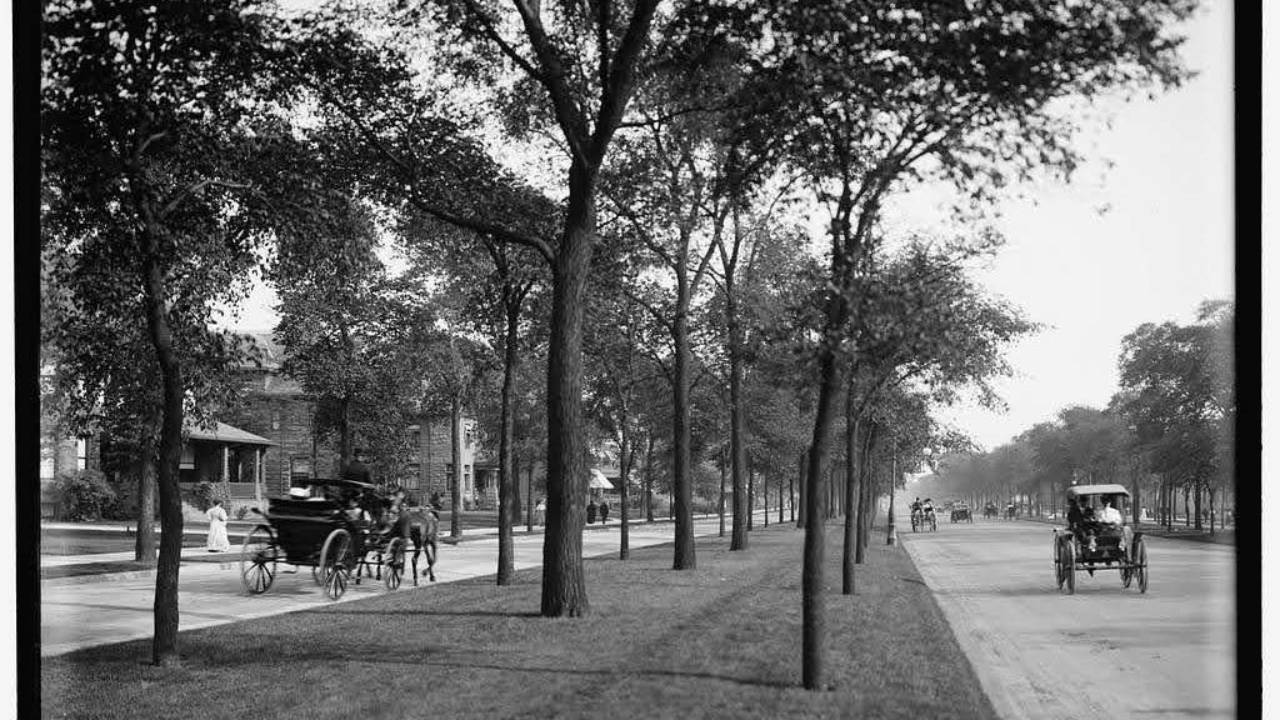Grand Boulevard (Bronzeville): Chicago’s Historic South Side Gem
Mar 26, 2025
Grand Boulevard (Bronzeville), a historic neighborhood on Chicago’s South Side, is a district rich with cultural heritage and architectural beauty. Bounded by 39th Street (Pershing Road) to the north, 51st Street to the south, Cottage Grove Avenue to the east, and the Dan Ryan Expressway to the west, Grand Boulevard has long been a center of African American culture, business, and activism. The neighborhood played a vital role in Chicago’s social movements and remains a testament to resilience and transformation.
Grand Boulevard by the Numbers


Origins and Early History
Originally part of Hyde Park Township, Grand Boulevard was annexed to Chicago in 1889. The neighborhood’s name derives from the wide boulevard that runs through it—what is now Martin Luther King Jr. Drive—designed as a grand, tree-lined promenade to connect the South Side to downtown. In its early years, the area attracted middle-class and wealthy residents, with stately greystones and mansions lining its streets.
By the late 19th century, the neighborhood began developing into a thriving commercial and residential district, with prominent churches, businesses, and entertainment venues drawing residents from across the city.
Transformation and Evolution
The early 20th century saw rapid demographic shifts, particularly as African American families moved into the area during the early waves of migration from the South. Grand Boulevard soon became one of the most significant centers of Black life in Chicago. Its bustling streets were lined with businesses, cultural institutions, and gathering places that shaped the city’s identity.
While the neighborhood faced economic and social challenges during the mid-20th century due to disinvestment and urban renewal policies, Grand Boulevard has experienced revitalization efforts in recent decades, with historic preservation projects, new housing developments, and community-led initiatives helping restore its vibrancy.
Historical Landmarks and Structures
Grand Boulevard is home to several important historical landmarks, including:
- The Harold Washington Cultural Center – A performing arts venue dedicated to Chicago’s first Black mayor, promoting Black arts and culture.
- Chicago Bee Building – A striking Art Deco building that once housed the Chicago Bee newspaper, founded by entrepreneur Anthony Overton.
- Pilgrim Baptist Church – Often referred to as the birthplace of gospel music, where Thomas A. Dorsey developed the genre in the 1930s.
- Victory Monument – A tribute to the 8th Regiment of the Illinois National Guard, an African American military unit that served in World War.
- Chicago Hip Hop Heritage Museum - The Chicago Hip Hop Heritage Museum celebrates, honors, and cherishes the community that nurtured collective talents and creative energies within the elements of Hip Hop.
Historical Figures
Several influential figures have shaped Grand Boulevard’s history, including:
- Ida B. Wells – Journalist, civil rights activist, and anti-lynching crusader who lived and worked in the neighborhood.
- Anthony Overton – Business magnate and founder of the Chicago Bee newspaper, the Overton Hygienic Company, and other enterprises that supported Black economic empowerment.
- Thomas A. Dorsey – Known as the father of gospel music, he pioneered the genre while serving as the music director at Pilgrim Baptist Church.
Historical Events
Grand Boulevard has been the site of several significant but lesser-known historical events, including:
- The 1919 Chicago Race Riot – One of the deadliest race riots in U.S. history, which saw violence spill into Grand Boulevard as Black residents defended their homes and businesses from attacks.
- Opening of the Overton Hygienic Building (1922) – A major milestone in Black entrepreneurship, housing one of the most successful Black-owned businesses in Chicago, providing jobs and economic opportunities to the community.
- The 8th Regiment’s Return Parade (1919) – Thousands gathered to celebrate the African American soldiers returning from World War I, marking a moment of pride and recognition for Black military service.
Current Trends and Redevelopment
Grand Boulevard continues to evolve, with redevelopment projects and community initiatives reshaping the neighborhood:
- Affordable Housing Initiatives – Efforts to preserve historic buildings and provide affordable housing for long-time residents.
- Business Revitalization – The emergence of new Black-owned businesses, restaurants, and creative spaces.
- Community Engagement – Local organizations working to address social and economic disparities while celebrating the area’s cultural legacy.
Conclusion
Grand Boulevard and Bronzeville at large, remains a vital part of Chicago’s rich history, blending past and present in a neighborhood that continues to shape the city’s identity. From its architectural gems to its cultural and social contributions, Grand Boulevard stands as a testament to resilience, creativity, and community pride. Whether exploring its historic streets or engaging with its thriving cultural scene, visitors and residents alike can appreciate the lasting impact of this remarkable South Side neighborhood. If you’re in the neighborhood visit the Bronzeville Winery, find them and other black owned businesses in our directory at www.chicagoblackbusinessdirectory.com
Stay connected with news and updates!
Join our mailing list to receive the latest news and updates from our team.
Don't worry, your information will not be shared.
We hate SPAM. We will never sell your information, for any reason.

